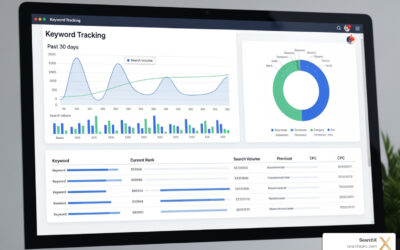Want faster page loads and better SEO for your static website? Accelerated Mobile Pages (AMP) can help. AMP is a framework designed to make web pages load quickly on mobile devices, improving user experience and search rankings. When combined with static websites, it creates a powerful solution for speed and performance.
Key Benefits of AMP for Static Websites:
- Lightning-Fast Load Times: AMP pages load up to 10× faster.
- SEO Boost: Improves Core Web Vitals and qualifies for features like Google’s "Top Stories" carousel.
- Lower Bounce Rates: Faster pages keep users engaged.
- Higher Click-Through Rates: AMP pages often outperform standard pages in search results.
Why Static Websites Pair Perfectly with AMP:
- Speed: Static HTML files are already fast; AMP makes them even faster.
- Security: Fewer vulnerabilities compared to dynamic sites.
- Cost-Effectiveness: Cheaper hosting and easier maintenance.
- Reliability: Handles high traffic without server strain.
Real-World Results:
- TransUnion reduced bounce rates by 26% with AMP.
- DiscoverCarHire.com saw a 73% increase in mobile organic traffic.
- Nestlé achieved an 82% higher click-through rate with AMP pages.
AMP isn’t just about speed – it’s about delivering a better mobile experience that boosts SEO and user engagement. If you’re running a static website, implementing AMP could be a game-changer.
SEO Benefits of AMP for Static Sites
Mobile Speed Improvements
AMP simplifies HTML, limits CSS, and loads JavaScript asynchronously, allowing static pages to load up to 4× faster while using 8× less data. This speed boost directly enhances Core Web Vitals, which are crucial for SEO. For example, pages that load within two seconds typically have a bounce rate of 9%, but if loading stretches to five seconds, bounce rates can soar to 38%. Faster load times not only improve user experience but also open the door to premium search opportunities.
Google Search Features
The increased speed from AMP doesn’t just help with rankings – it also unlocks advanced search features. AMP pages can qualify for Google’s "Top Stories" carousel, giving them prime visibility in mobile search results. Real-world examples highlight the impact of this visibility:
- Rotten Tomatoes saw a 25% higher click-through rate after adding structured data to 100,000 pages.
- Food Network implemented AMP on 80% of its pages, resulting in a 35% jump in visits.
- Nestlé reported an 82% higher click-through rate for rich results compared to standard listings.
User Metrics Impact
The technical improvements AMP brings lead to better user engagement. Here’s a snapshot of key metrics:
| Metric | Impact of AMP Implementation |
|---|---|
| Page Load Speed | Up to 10x faster than standard mobile pages |
| User Expectations | 47% of users expect pages to load within 2 seconds |
| Mobile Abandonment | 53% of visits are abandoned after a 3-second load time |
To fully leverage these benefits, site owners can take additional steps like minimizing CSS and tags, compressing images (using tools like TinyPNG), enabling lazy loading, and using fast hosting paired with a CDN. These strategies have proven results – Rakuten, for instance, implemented AMP and achieved a 2.7x increase in search traffic and a 1.5x increase in session duration.
AMP Success Examples
E-commerce Results
AMP implementation has delivered impressive outcomes for e-commerce static websites. A study analyzing 19 e-commerce sites reported significant improvements across several key performance metrics:
| Metric | Average Improvement |
|---|---|
| Organic Traffic | 32.1% increase |
| SERP Impressions | 42.16% increase |
| Click-through Rates | 12.4% increase |
Several businesses have seen tangible benefits. For instance, Annie Selke, a home decor retailer, experienced a 32% rise in organic traffic and a 13% boost in conversions. Similarly, Event Tickets Center achieved a 20% increase in conversion rates while cutting their bounce rates by 10%.
DiscoverCarHire.com reported a 73% surge in mobile organic traffic and a 29% improvement in Google Ads conversions after adopting AMP. Greenweez, another e-commerce business, noted that 50% of their mobile organic traffic came from AMP pages within just three months, alongside an 80% rise in mobile conversion rates.
News Site Performance
News publishers have also seen substantial benefits from AMP adoption. A review of seven publisher sites revealed the following improvements:
- 13.7% increase in organic traffic
- 11.1% growth in SERP impressions
- 23.1% higher SERP click-through rates
Gizmodo, for example, saw their pages load three times faster with AMP, and 80% of their AMP traffic came from new visitors. Additionally, they observed a 50% increase in impressions per page view on AMP-enabled pages.
A study by Forrester Consulting highlighted the potential financial and engagement returns of AMP for high-traffic websites. For sites with 4 million monthly visits, the study found that AMP implementation could lead to positive results within six months, including:
- 20% increase in sales conversion rates
- 10% year-over-year growth in site traffic
- 60% rise in pages per visit
These examples underscore how AMP’s focus on speed and mobile accessibility can directly enhance SEO performance, particularly in industries where user engagement and conversion rates are closely tied to page load times and mobile usability.
Common AMP Implementation Issues
Technical Limits
AMP comes with specific restrictions that can complicate static website development. For instance, it imposes a 50KB limit on custom CSS, which often means developers need to streamline stylesheets and possibly rethink layouts.
Here are some of the key technical rules AMP enforces:
| Requirement | Impact on Development |
|---|---|
| No Custom JavaScript | Developers must rely on AMP components |
| Inline CSS Only | All styles must be included within the <style amp-custom> element |
| Explicit Dimensions | Every content element requires defined width and height |
| Limited Third-party Scripts | Only AMP-approved integrations are allowed |
These rules ensure AMP compliance but can make development more time-consuming. Although 80% of teams complete AMP landing pages within a week, understanding these restrictions upfront is essential before diving into setup and performance tracking.
Problem-Solving Tips
Despite these challenges, developers can tackle AMP limitations effectively with the right strategies:
- Image Optimization
- Use the
<amp-img>component with defined dimensions for responsiveness. - Enable lazy loading for images below the fold.
- Compress images to improve performance.
- Use the
- Analytics Integration
- Standard JavaScript analytics tools don’t work on AMP pages. Instead, use:
- AMP-compatible Google Analytics.
- The
<amp-analytics>component. - Properly configure tracking to fit within AMP’s constraints.
- Standard JavaScript analytics tools don’t work on AMP pages. Instead, use:
"AMP pages are an essential part of your website experience. Implementing AMP on your pages will create a better mobile experience for your users, and it’s the only way of getting featured in the top stories carousel on mobile devices."
- Build Static Websites
Validation Tools
To ensure AMP compliance, developers should make use of these tools:
- AMP Test Tool: Confirms compatibility with Google Search.
- Rich Results Test: Verifies structured data implementation.
- AMP Validator: Checks for any errors in AMP pages.
For ongoing quality assurance, tools like the AMP Project Validator or the Chrome extension can be used. These solutions help streamline the process, making it easier to implement and test AMP on static sites effectively.
sbb-itb-880d5b6
AMP Tutorial – Examples of Accelerated Mobile Pages
AMP Setup Guide
Setting up AMP (Accelerated Mobile Pages) for static websites requires careful configuration to ensure mobile pages are optimized while maintaining SEO benefits. Here’s how to get started:
Testing and Launch Steps
The AMP setup process consists of three key components:
- Configure AMP Routes
Set up AMP routes by appending /amp to your URLs. If you’re using static site generators like Frozen-Flask, you can automate the creation of AMP pages for efficiency.
- Layout Implementation
Update your HTML template to align with AMP requirements. Here’s what to change:
| Required Change | Implementation Detail |
|---|---|
| HTML Tag Modification | Add the amp attribute to the root <html> tag |
| JavaScript Integration | Remove custom JavaScript and replace it with AMP components |
| Analytics Setup | Use JSON to configure AMP-compatible analytics |
| CSS Implementation | Embed all CSS within a <style amp-custom> tag |
- Content Optimization
Ensure your content is AMP-compliant by:
- Replacing standard
<img>tags with<amp-img>components. - Adding canonical and AMP version links to your pages.
- Including the necessary AMP boilerplate code in your HTML.
Performance Tracking
Once your AMP setup is live, monitor its performance using tools like amp-analytics, AMP Validator, PageSpeed Insights, and Google Search Console. Track key metrics such as load time, Core Web Vitals, user engagement, and traffic.
For even better results, integrate the AMP Optimizer into your build process. This tool automates tasks like:
- Adding missing component script imports.
- Inserting required AMP tags.
- Enhancing performance.
Additionally, you can monitor performance differences between AMP Cache and your origin server by using ampdocHost analytics integration. This can help you identify and address any discrepancies in performance.
Key Takeaways
Here’s a quick look at how AMP can supercharge SEO for static websites:
AMP pages are known for their incredible speed, loading up to 10 times faster than standard pages. This speed boost not only enhances user engagement but also helps maintain strong conversion rates. Research shows that even a 1-second delay in page load time can slash conversions by 20%.
"If your content keeps users engaged, they are more likely to spend time exploring your site, click through to other pages, and come back in the future. This signals to Google that your content provides value, meets user intent, and deserves a higher ranking." – Danny Conlon, VP of Product and Marketing, Ignite Visibility
AMP is particularly impactful for mobile SEO, with studies showing AMP pages achieving up to a 92% click-through rate in mobile search results. This improvement directly correlates with better visibility in mobile-specific features like news carousels.
Here’s a breakdown of core performance metrics to focus on:
| Performance Area | Target Metric | Impact |
|---|---|---|
| Page Load Speed | Under 2 seconds | 4x faster than non-AMP pages |
| Data Usage | 8x reduction | Better mobile browsing experience |
| Mobile CTR | Up to 92% | Improved visibility on search pages |
While AMP itself isn’t a direct ranking factor, it significantly enhances user experience and Core Web Vitals, which play a vital role in SEO. By maintaining high content quality across both AMP and non-AMP versions and using structured data effectively, you can maximize search visibility and keep users engaged.
FAQs
How does AMP improve SEO for static websites?
AMP, or Accelerated Mobile Pages, can give static websites a boost in SEO by drastically improving how quickly pages load and enhancing the overall user experience. Static websites, which present fixed content, pair well with AMP’s streamlined design. By cutting down on heavy HTML and JavaScript, AMP ensures pages render much faster. And since search engines like Google favor mobile-friendly pages with quick load times, implementing AMP can help push your site higher in search rankings.
Another bonus? AMP pages are often cached by Google, meaning they load almost instantly when users click on them. This not only increases visibility in search results but also improves metrics like click-through rates while reducing bounce rates. For static websites that are already built for simplicity, AMP takes performance up a notch by delivering content at lightning speed, aligning perfectly with users’ expectations for smooth and fast browsing.
What challenges do developers face when adding AMP to static websites, and how can they overcome them?
Implementing AMP on static websites can be tricky because of design restrictions, performance challenges, and SEO upkeep issues. For example, AMP enforces rules like banning custom JavaScript and requiring specific HTML structures, which can limit creative flexibility and potentially affect the overall user experience. On top of that, if AMP is not implemented correctly, it can cause indexing problems, which might hurt your site’s search rankings.
To tackle these obstacles, developers can rely on AMP validation tools to identify and fix errors, ensuring the site meets AMP standards. Using AMP components allows for some level of customization without sacrificing performance. Regularly testing with tools like Google Search Console is also crucial to confirm that AMP pages are indexed properly, protecting both your SEO efforts and the user experience.
Does using AMP impact the design flexibility of static websites, and how can I balance speed with design?
Yes, using AMP (Accelerated Mobile Pages) can restrict how much creative freedom you have when designing static websites. AMP enforces strict rules on HTML and CSS to ensure fast load times. For example, it limits CSS to just 50KB and restricts the use of custom JavaScript. These rules can make it harder to include intricate designs or advanced animations.
To balance speed and design, consider leveraging AMP’s pre-built components. These are specifically designed for performance and can still support responsive layouts. Focus on creating fluid designs that adjust to various screen sizes, and use responsive images to keep your site visually appealing without sacrificing speed. By sticking to AMP guidelines, you can build a website that’s fast, user-friendly, and optimized for both visitors and search engines.




